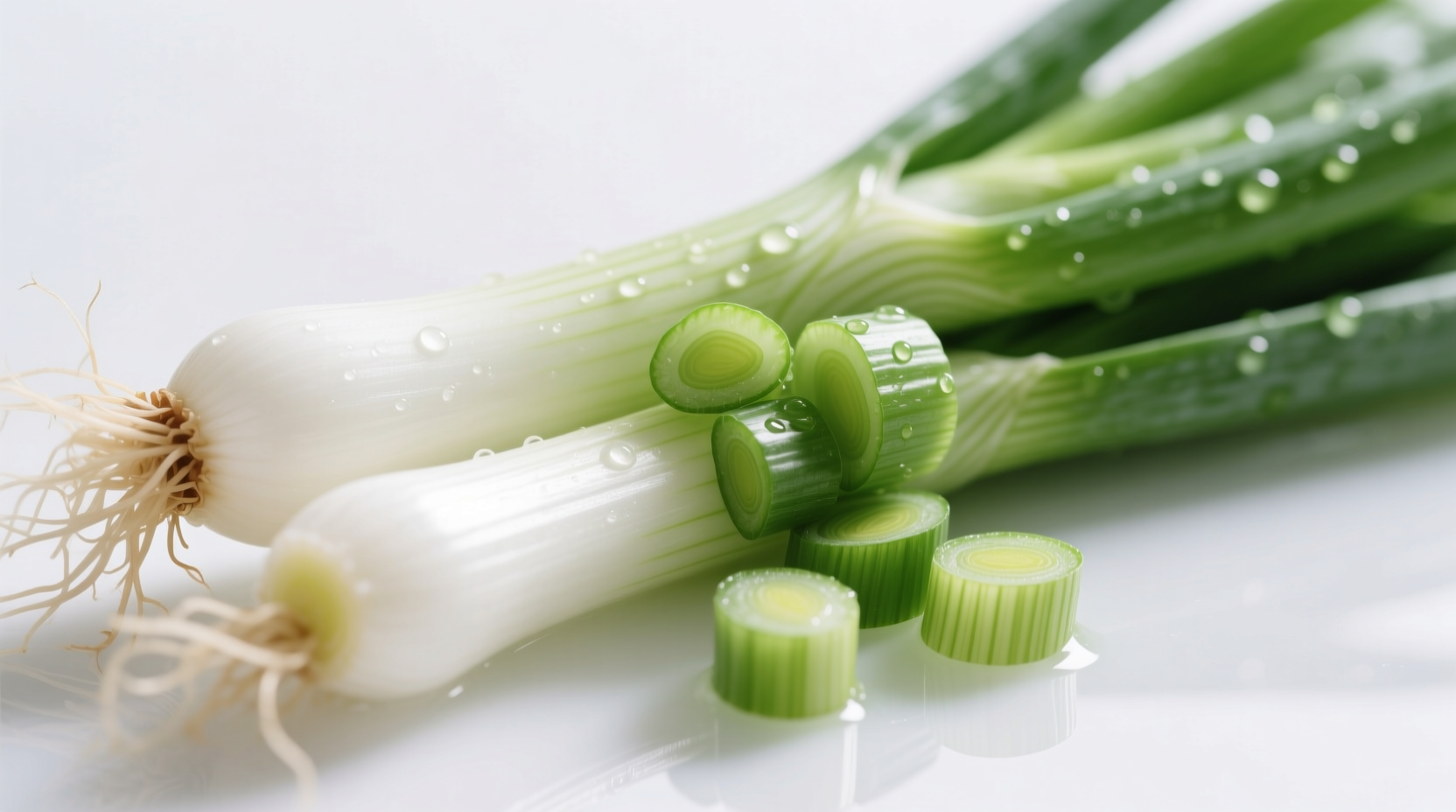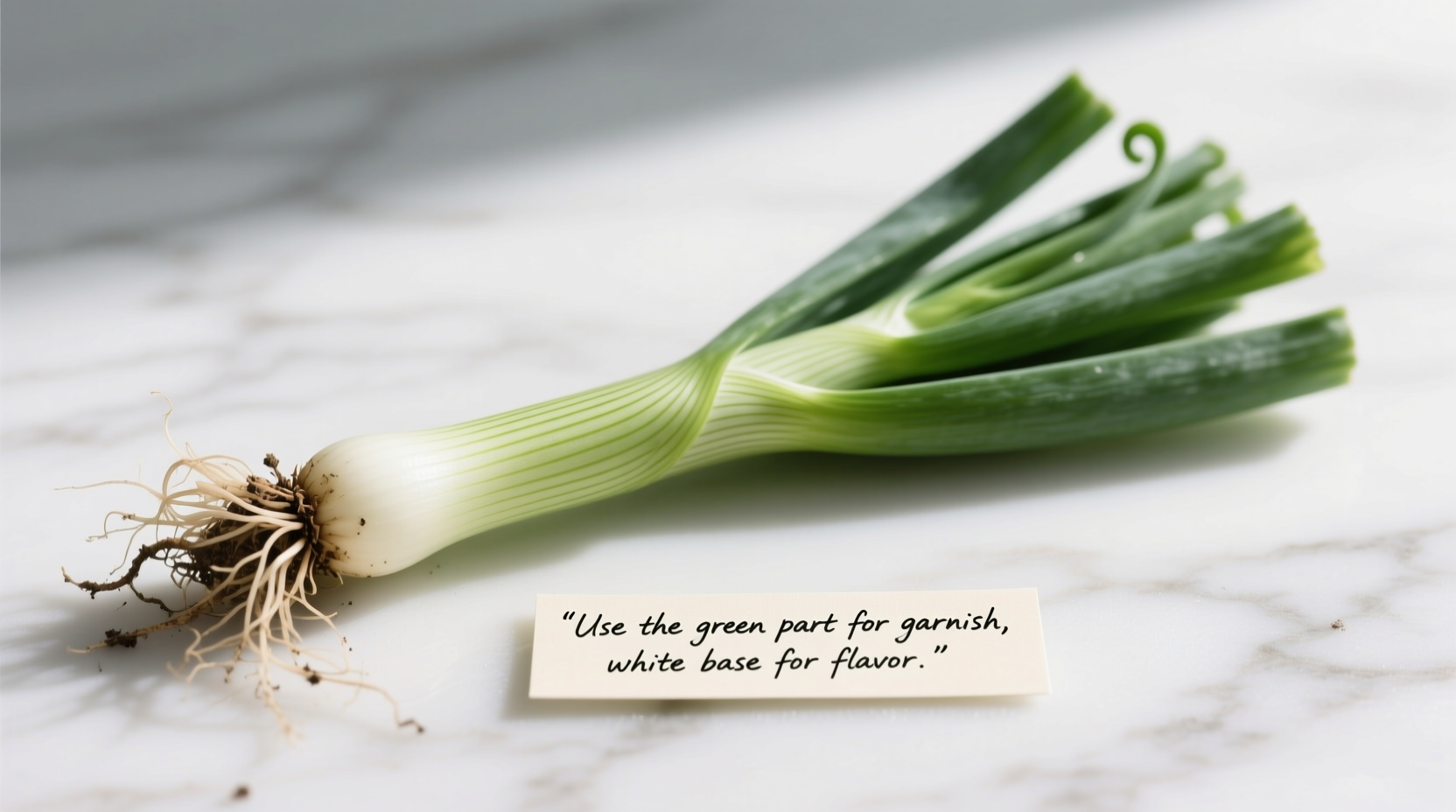All parts of the green onion are edible and serve distinct culinary purposes. The white bulb provides sharp, pungent flavor ideal for cooking, while the green stalks offer milder taste perfect for garnishing. Proper usage maximizes flavor and reduces food waste.
Understanding which parts of green onion to use transforms ordinary dishes into restaurant-quality creations. This complete guide reveals exactly how professional chefs utilize every section of this versatile ingredient, helping you elevate your cooking while minimizing waste.
Green Onion Anatomy: What You're Working With
Green onions, also known as scallions or spring onions, consist of three main sections, each with unique flavor profiles and culinary applications:
| Green Onion Part | Flavor Profile | Best Cooking Applications |
|---|---|---|
| White bulb and lower third | Strong, pungent, onion-forward | Sautéing, stir-frying, soup bases |
| Middle transition zone | Moderate sharpness, balanced flavor | Quick cooking, omelets, sauces |
| Green stalks (upper two-thirds) | Mild, grassy, fresh | Garnishing, salads, finishing dishes |

White Bulb: The Flavor Foundation
The white portion contains the highest concentration of sulfur compounds, delivering that characteristic onion punch. Professional chefs always start with this part when building flavor bases:
- For sautéing: Chop finely and add to hot oil first, cooking until translucent before adding other aromatics
- For stir-fries: Cut into 1-inch pieces and add midway through cooking for balanced texture
- For soups and stews: Rough chop and simmer with other aromatics to create depth
According to the USDA National Nutrient Database, the white portion contains slightly higher concentrations of allicin precursors compared to the green sections, explaining its more intense flavor profile when raw.
Green Stalks: The Finishing Touch
The green portions maintain their vibrant color and delicate flavor when used properly:
- As garnish: Thinly slice crosswise (chiffonade) just before serving for maximum visual impact
- In salads: Use whole or cut into 2-inch pieces for texture without overwhelming other ingredients
- For infused oils: Steep whole stalks in warm oil for subtle onion flavor
Food science research from the Journal of Agricultural and Food Chemistry confirms that the green portions contain higher levels of chlorophyll and carotenoids, contributing to their milder taste and vibrant color retention.
Practical Usage Guide by Cooking Method
Raw Applications
When using green onions raw, separate the white and green portions. The white bulb works well in salsas and dips where stronger onion flavor is desired, while the green stalks shine in salads, guacamole, and as toppings for tacos. For maximum flavor release in raw applications, chop the white portion 10-15 minutes before using to allow enzymatic reactions to develop complex flavors.
Cooking Applications
For cooked dishes, add white portions early in the cooking process to mellow their sharpness, then incorporate green portions in the final minutes to preserve their color and fresh flavor. In stir-fries, add white parts when the wok is hottest, then greens when ingredients are nearly done. For soups and stews, white portions can simmer for extended periods while greens should be added in the last 5 minutes.
Garnishing Techniques
Professional chefs use three signature techniques for green onion garnishes:
- The classic slice: Thin diagonal cuts for rice bowls and noodle dishes
- The curl technique: Soak cut greens in ice water for 10 minutes to create natural curls
- The blossom: Cut the white portion lengthwise, then crosswise in tight intervals to create decorative blossoms when placed in cold water
Storage Secrets for Maximum Freshness
Proper storage extends green onion usability significantly. The University of California Cooperative Extension recommends treating green onions like fresh herbs:
- Trim root ends and store upright in 1-2 inches of water in the refrigerator
- Cover loosely with a plastic bag to maintain humidity
- Change water every 2-3 days to prevent bacterial growth
This method keeps green onions crisp for 10-14 days compared to just 3-5 days when stored traditionally. The white portions typically last slightly longer than the greens due to their denser structure.
Common Mistakes to Avoid
Even experienced cooks make these green onion errors:
- Mixing parts indiscriminately: Using green portions early in cooking causes them to become slimy and lose color
- Overcooking white portions: Cooking white bulbs too long creates bitter compounds
- Improper washing: Not cleaning between layers of the white bulb where dirt collects
- Discarding roots: Small root portions can be used in stocks for additional flavor depth
Maximizing Your Green Onion Investment
Green onions offer exceptional value when used completely. The white portions provide robust flavor for cooking foundations, while the greens deliver visual appeal and subtle taste as finishing elements. By understanding these distinct characteristics, you'll waste less and create more balanced dishes. Remember that the transition zone between white and green offers the perfect compromise for dishes requiring moderate onion flavor with some color retention.











 浙公网安备
33010002000092号
浙公网安备
33010002000092号 浙B2-20120091-4
浙B2-20120091-4